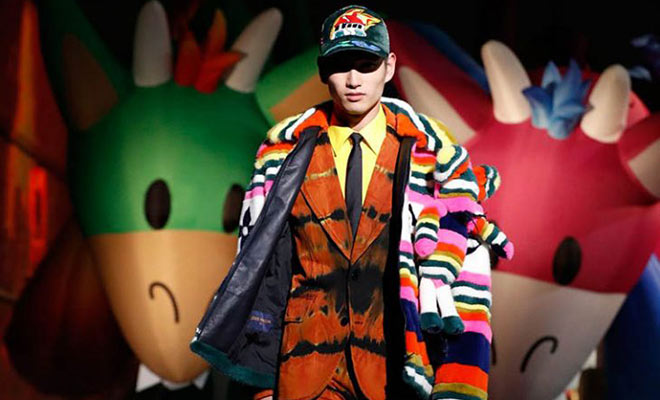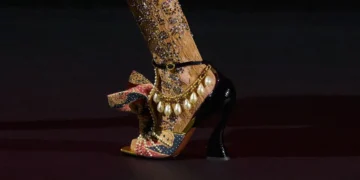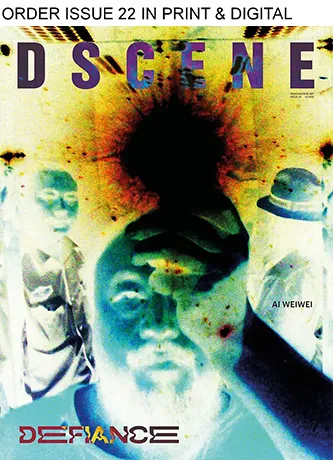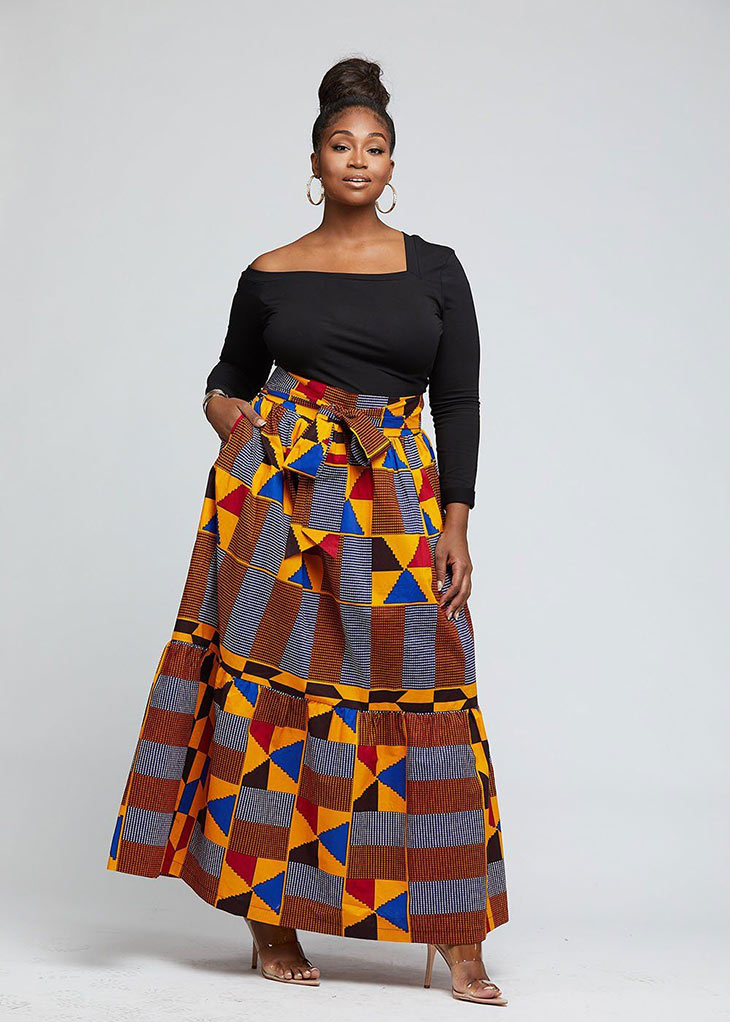
With its intricate patterns, bright colors, and interesting imagery, African clothing is beautiful to look at – but the symbols you see on these clothes are for more than just decoration. These design elements are intentional, and they often correlate to certain religious beliefs, political commentary, or even historical events.
As certain types of fabric, like Kente fabric or Adinkra cloth, become more mainstream, not everyone who wears them may understand the cultural significance. Keep reading for an in-depth look at what the symbols on popular African fashion means as well as the history behind some of these garments.
Kente Fabric
Kente cloth is native to the Akan ethnic group from Ghana. The word ‘Kente’ means ‘basket,’ and finished patterns on Kente fabric can resemble a woven basket.
Kente fabric can be worn by both men and women, and typically features larger, 3 to 4-inch panels that are sewn together. Depending on the patterns created with the panels, Kente fabric often represents common motifs such as political ideology or religious beliefs.
The fabric’s colors on the pattern can also hold some symbolism – green usually means fertility, red refers to death, blue to love, and white expresses purity.

Combining colors can also have its own separate meanings. For instance, a textured pattern on Kente fabric that contains reds, yellows, and oranges may be used to represent gold dust, and symbolize wealth and prosperity. Before paper money and coins, gold dust was a historic currency among the Akan people.
Adinkra Cloth
Native to Ghana, Adinkra is dyed cotton cloth that’s embroidered and stamped with traditional Adinkra symbols. Adinkra cloth came from the Ashanti people, and was typically made for royalty to wear at religious ceremonies.
There are over 700 symbols that you can find on Adinkra cloth – each with its own meaning. Most of these symbols represent historical events or religious proverbs from the Ashanti people. A common symbol you’ll find on Adinkra cloth includes the Aban, which is a symbol of strength, authority, or a seat of power.
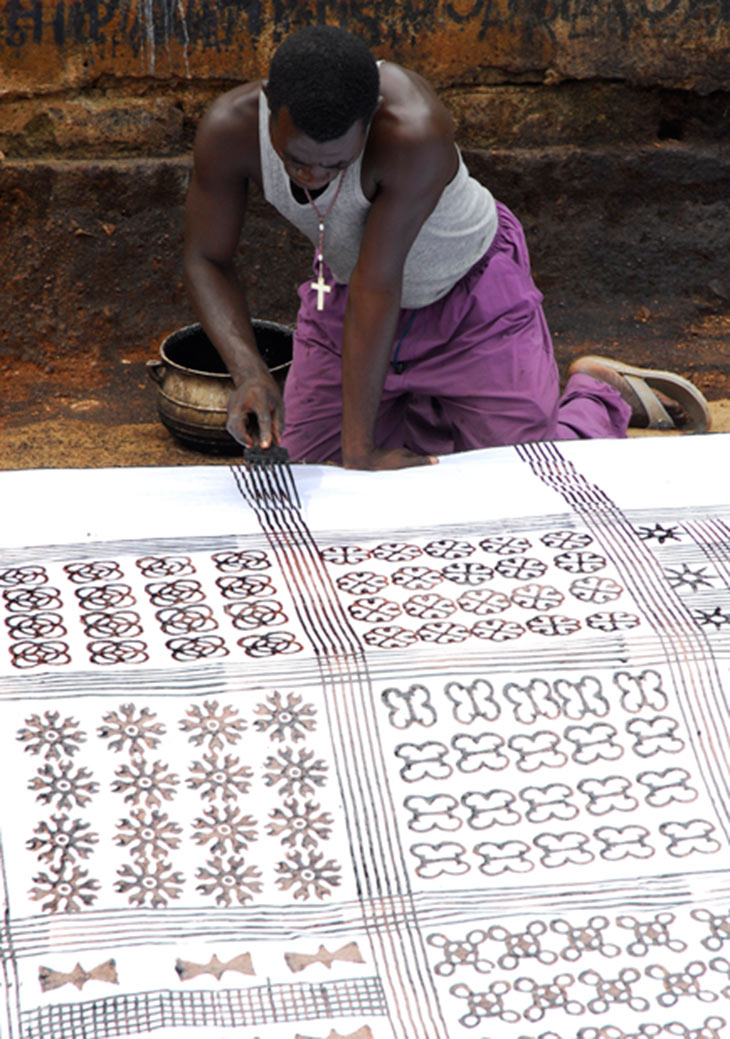
There’s also the Abe Dua, which resembles a palm tree, and symbolizes resourcefulness, wealth, and independence. Another symbol, Nea Onnim, comes from the proverb, “When he who does know learns, he gets to know.”
Mud Cloth or Bògòlanfini
Bògòlanfini, also called mudcloth, is another type of textile you’ll see in African print fabric. It gets its name from how it’s made.
Men weave thin strips of cloth together, and then it gets dyed into a bath with leaves and branches. Then, once it’s dried, it’s painted with fermented mud collected from ponds. Once the painted mud dries, the fabric gets washed again to get rid of any excess mud, and more mud is added.
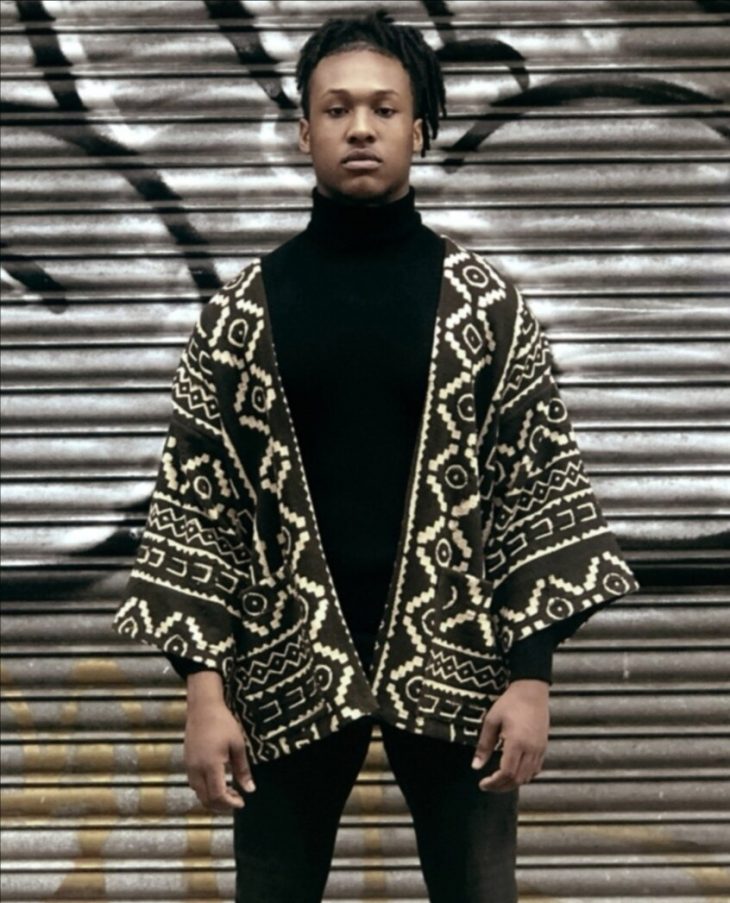
Finally, a bleach solution is added to certain areas of the pattern, and it’s left to dry in the sun for another week. When it’s completely dry, most of the cloth is dark, but the pattern is white.
Much like Kente fabric or Adinkra cloth, there are numerous patterns and symbols you could find on mudcloth. Some of the popular symbols included a concentric circle, which represents the world, a twirl, which symbolizes life.
Historically, new mothers were wrapped in mudcloth after they gave birth as the fabric was believed to help ward off harmful spirits.
Kuba Cloth
Historically from central Africa (which is now the Republic of the Congo), Kuba cloth is woven by hand using raffia palm leaves, and then dyed earth tones with vegetable dyes. There are actually two types of Kuba cloth: flat woven cloths with applique or embroidery, and cut pile cloths. Some of these cloths were used for sleeping mats, furnishings, or wall hangings – but they could also be made into skirts as well.
The process for making Kuba cloth was tedious and time-consuming, and even just creating a pattern that was big enough for a placemat could take several days.
Each pattern is unique to one another, but most of the patterns feature geometric shapes merging together in a way that resembles movement. Historically, someone’s Kuba pattern could communicate their age, social standing, wealth, and even their marital status to other people.
Meaning Behind the Colors in African Textile
Just as the patterns on African fashion hold cultural and historical significance, so do the colors you find on these textiles. Some of the most popular colors you’d find on fabrics included blue, red, green, gold, black, and white.
Blue, the color of the sky and water, represents love and harmony to many African cultures. It’s a calm color, and not unusual to see it on Kente fabric.
Green, and other earth tones, represent nature, fertility, and growth. Depending on the pattern, this growth could also indicate a spiritual growth, not just a physical one.
Since gold was a currency for many African tribes, it’s not surprising that a pattern with the gold color represents wealth and financial prosperity. Historically, people who wanted to increase their social standing might’ve worn patterns that featured gold colors in it.
As the color of blood, red usually indicated death, spiritual troubles, or political tensions between tribes.
White was a special color for a lot of African cultures, and symbolizes spirituality and purity. Depending on the tribe, only specific people or tribesmen might’ve been allowed to wear white fabric or textiles.
Black is another color with a couple of different cultural meanings. Not only is it for funeral rites or mourning after death, but it can also symbolize maturity and spiritual energy.
Today, not everyone may understand the symbolism behind these patterns and colors, but you may want to keep their cultural and historical significance in mind when shopping for African fashion.
